How to grow dahlias – fill your garden with vibrant summer color
Learn how to grow dahlias from tubers, including advice on where to plant these flamboyant flowers and how to care for them
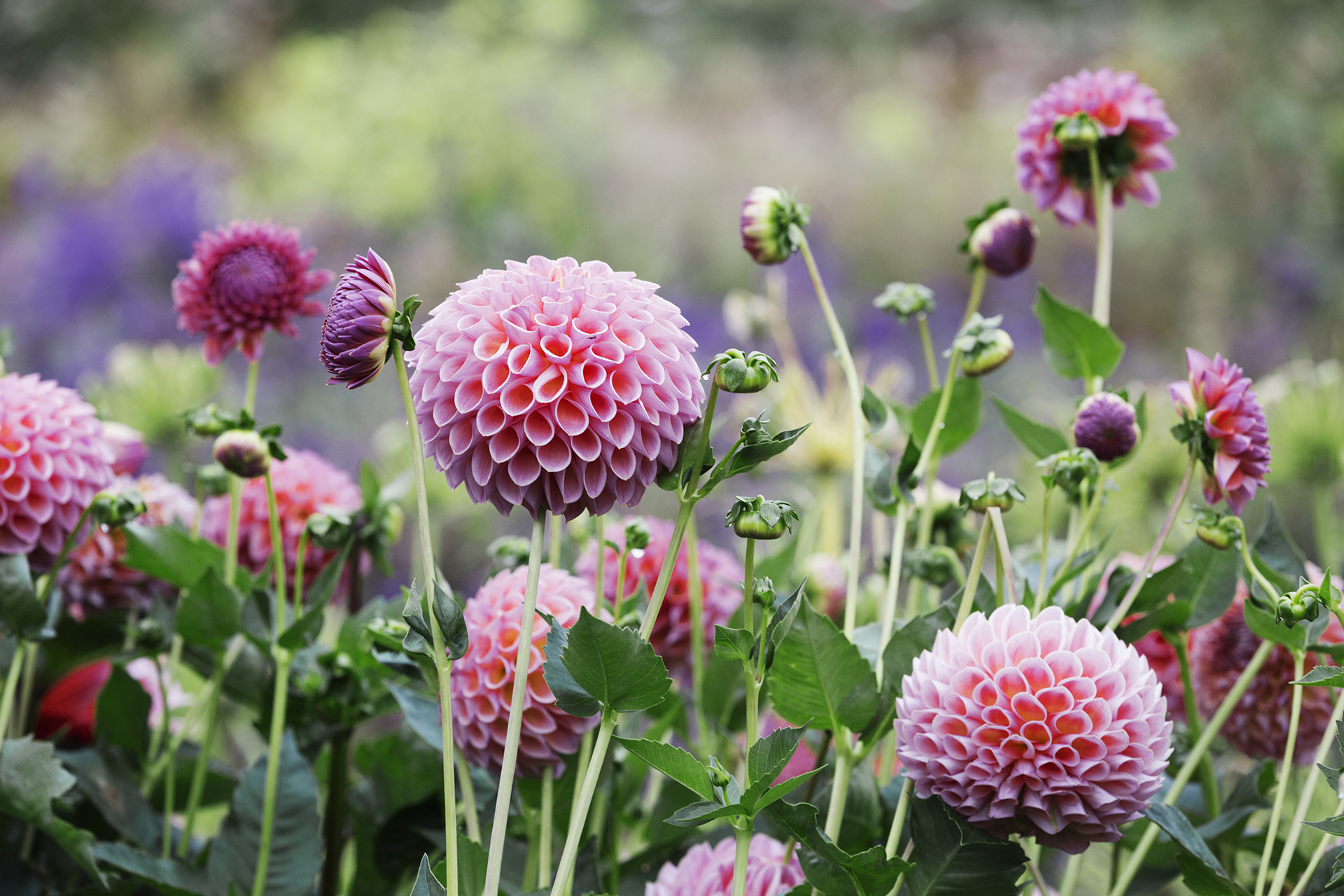
Once you know how to grow dahlias you can fill your garden with bursts of color from late summer into fall. Boasting a huge array of colorful flowers in all sorts of sculptural forms, and in bloom from July right through to the first fall frosts, these showy plants are a brilliant option for late summer flower bed ideas.
There really is a dahlia to suit all gardens and tastes. Choose from bright and bold vibrant tones to subtle pastel shades, and from the daintiest lilliput and single flower varieties, to multiple petalled pompons and dinner-plate sized forms. They create a mesmerising display and can look particularly effective planted en masse or as part of a mixed border, but there are many varieties that will happily grow in containers on a patio, too.
Dahlias are also a brilliant flower for cutting, with stems lasting up to a week in a vase and the more you cut them the more they grow. Plus, they are marvellous multipliers: from a single tuber you could get up to ten 'baby plants' by the end of the growing season.
Tips for growing dahlias
You can buy dormant dahlia tubers to plant in spring, or pre-order them earlier from a specialist nursery for delivery in spring. You may even be able to take some from a kind friend who has divided their clump of tubers.
Dormant dahlias will come delivered in the form of tubers – clusters of brown, potato-like roots joined together on a dried stem, and are among the best summer bulbs to plant. All tubers will be different sizes. Ensure that each tuber has some stem and at least one of the buds or ‘eyes’.
Knowing when to plant dahlias is a crucial part of learning how to grow dahlias. Dahlias are frost tender so can only be planted out once the danger of frosts has passed, allowing about eight weeks to the start of flowering.
If you have the space, you are best starting to grow dahlias under glass. 'You can pot them up in March or early April, in a generous pot (at least 2 litres) filled with multi-purpose potting compost. Place them in a light, frost-free place and keep the compost moist. They will have formed bushy plants by the time the frosts have ended and will be in flower by the beginning of July,' advises plantswoman Sarah Raven.
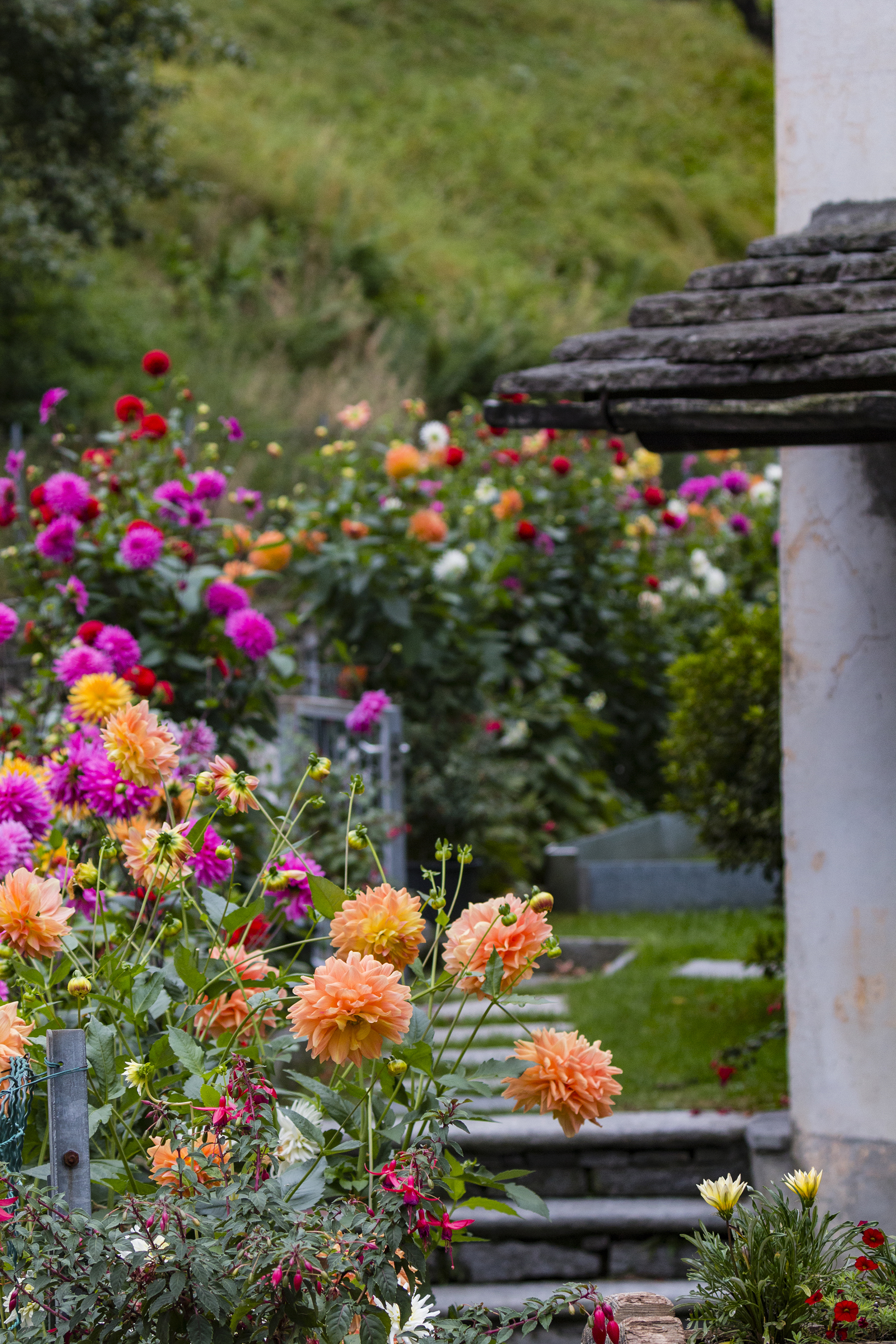
Where to plant dahlias
Dahlias will grow best in a sunny spot, protected from strong winds, in rich, moist, well drained loamy soil but not wet, waterlogged soils.
'Dahlias thrive in warm, sunny weather. Plant them in a spot that gets at least six hours of direct sunlight each day. Otherwise your plants will get leggy reaching for the light, and they won't bloom as abundantly as possible,' advises flower farmer and dahlia expert Erin Benzaken, author of Discovering Dahlias, available on Amazon.
Plus where there is sunshine, there are also pollinators. 'Open centered dahlias are becoming very popular because of the easy accessibility of their pollen for bees and other insects. Not all of these make much of a statement in the garden, often having small flowers, but there are some that do,’ says June Nash of The National Dahlia Society.
Prepare the soil well for the hungry plants. Improve it by adding in organic matter, such as home-made compost or well-rotted manure, over the area where you’re planning to grow dahlias.
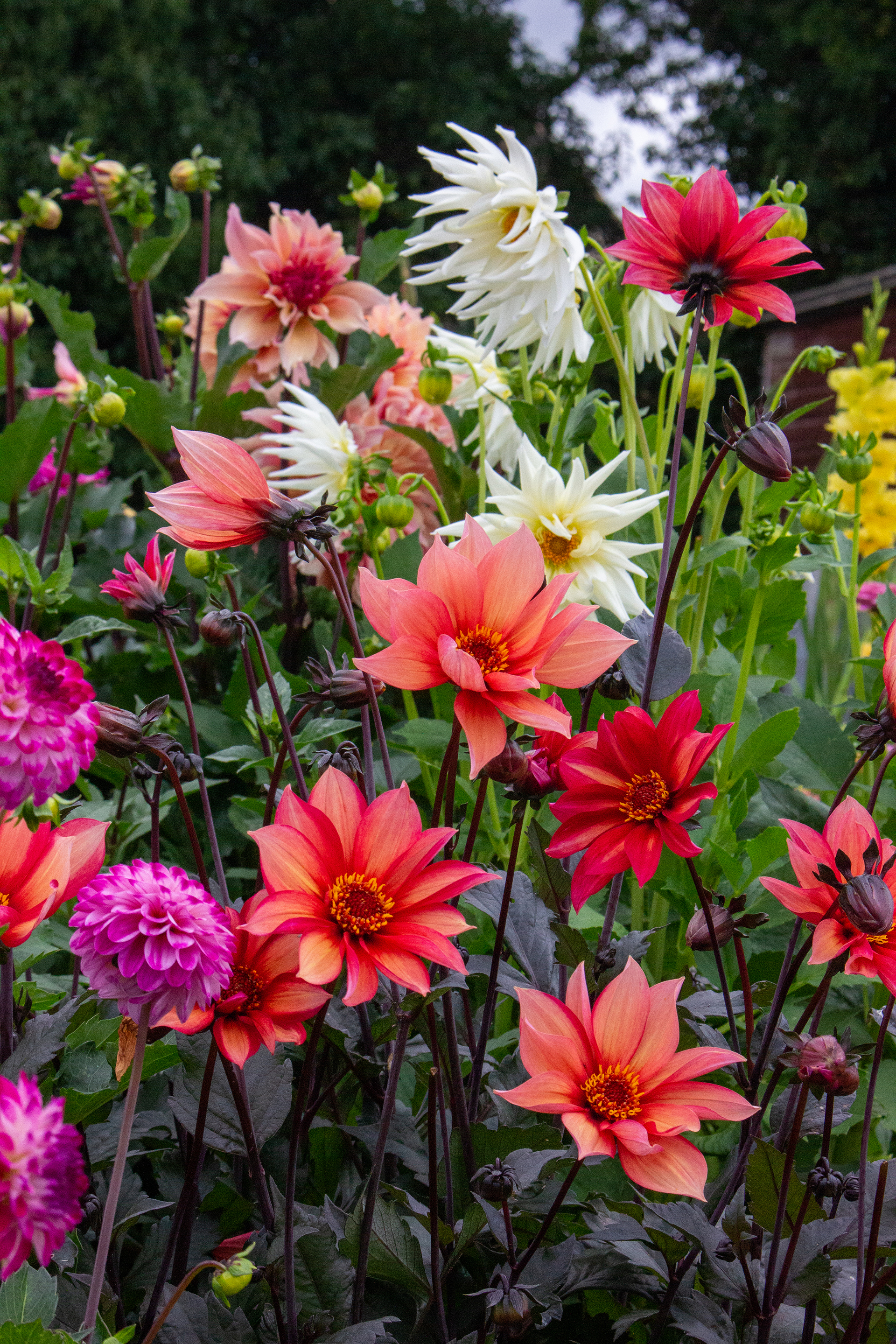
How to grow dahlias
The best way to grow dahlias is to start them off in pots as they are frost tender. By planting the tubers into pots the plants can be kept under cover in a greenhouse or sun room and protected from the cold weather. There are also smaller, dwarf varieties that are ideal for growing in pots as part of your container gardening ideas.
Here's our step by step guide on how to grow dahlias in pots from tubers:
- Pot up the tubers into five-litre pots, approx 8in in diameter, filling them up to their necks in potting compost and ensuring that the stem/crown is pointing up.
- Water the pots and leave them in a sunny spot, undercover in the greenhouse or a sun room. Growth rates will vary but you should see shoots start to appear within five weeks.
- Dahlias should not be planted out until the risk of frost has passed, but as they grow they can be brought outside during the day to help them acclimatise and to give them maximum sunshine. They must be brought in at night.
- When your dahlia plants are around 12 inches tall the growing shoots can be pinched out to encourage a bushier plant and more blooms.
- Dahlias are hungry plants that like being kept moist; digging in plenty of well-rotted manure or organic matter to the soil before planting them in your flower bed will keep them well fed and help the ground retain moisture.
- Once the risk of frost has passed, your dahlia plants can be planted out into their flowering position. Spacing will vary depending on variety but generally dahlia plants will need to be spaced around 20 inches apart.
- Dahlias can grow up to 5ft tall so will need support, particularly if you are growing the giant dinner-plate varieties. Once planted, add in bamboo stakes which can be used to tie the plant into as it grows, alternatively you can buy metal support rings that can be placed around the plant.
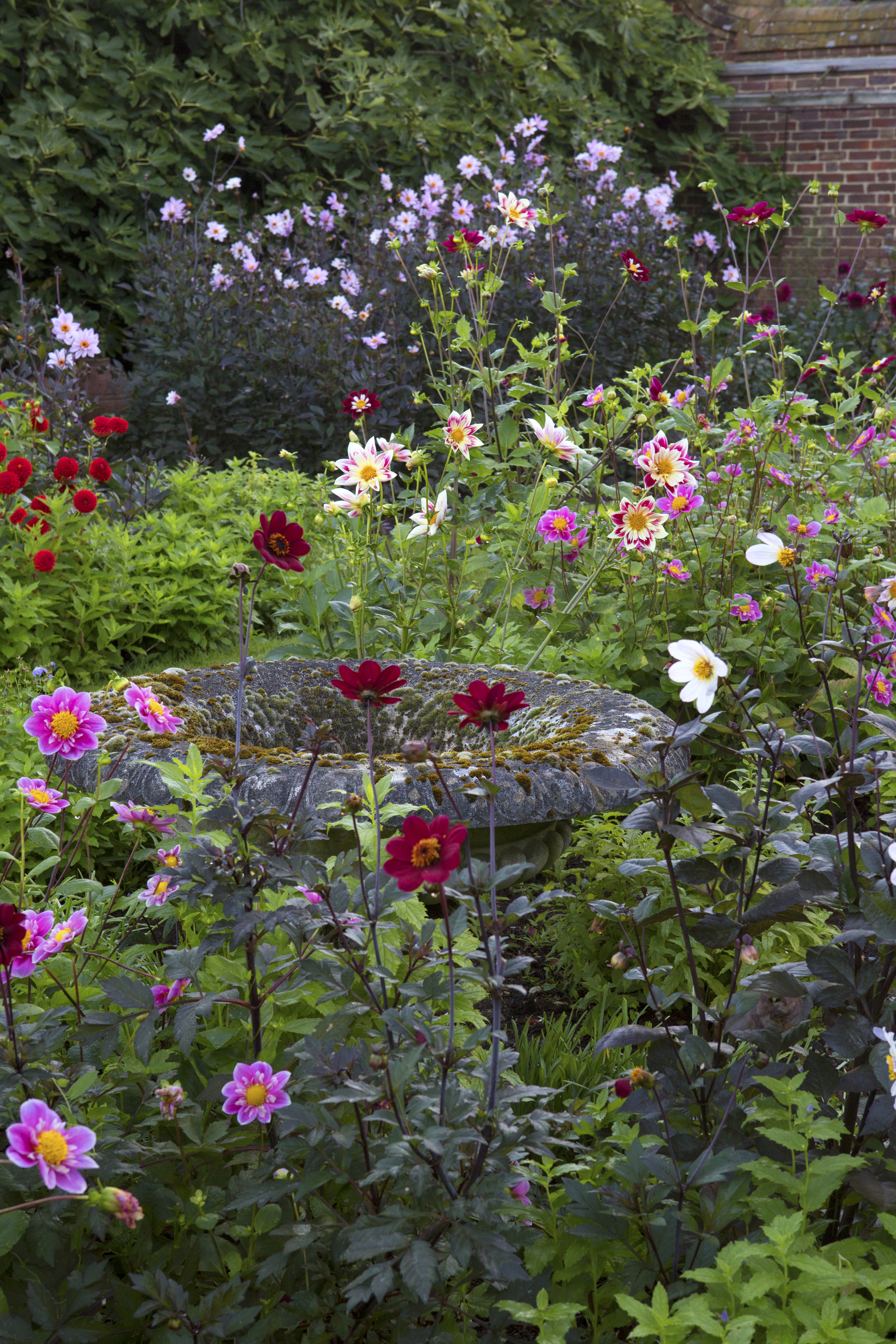
Dahlia tubers can also be planted directly into the ground once the risk of frost has passed. To do this dig a hole about 12 inches deep, add in some compost or manure and wet with a watering can of water. Position the dahlia tubers about 4 to 6 inches deep with the crowns pointing up.
Some dahlias can also be grown from seed which can be done undercover in spring. To grow dahlias from seed, sow the seeds onto the surface of moist compost in a seed tray and cover with vermiculite. Keep in a sunny spot in a greenhouse or on a windowsill. Once seedlings are big enough to handle pot them on into individual pots. Plant out once the risk of frost has passed. You can even harvest dahlia seeds from existing plants to grow new ones – though there is no guarantee that the new plants will replicate the parent dahlias.
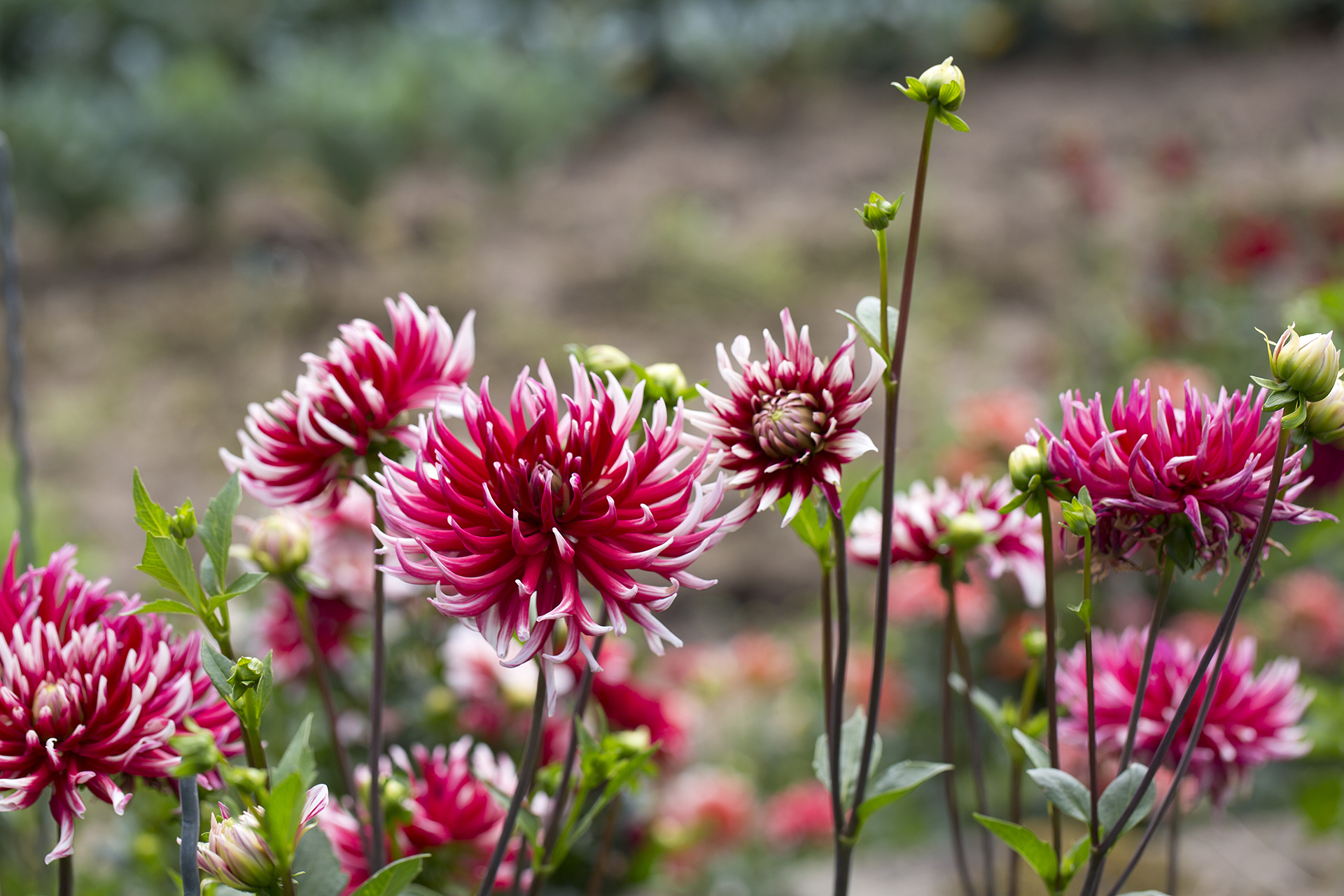
Care tips
- Pinch: As the dahlias grow, pinch out the growing tips to promote bushy growth.
- Feed, feed, feed: Once a fortnight, between July and September, feed dahlia plants with a liquid balanced feed to boost flowering, such as a good tomato feed.
- Water: You will need to water your dahlias once a week in dry weather by giving them a good soaking down to the roots.
- Protect: Protect from dahlia pests such as slugs and snails by adding nematodes to the soil, or add barriers, such as rough or sharply textured types of mulches.
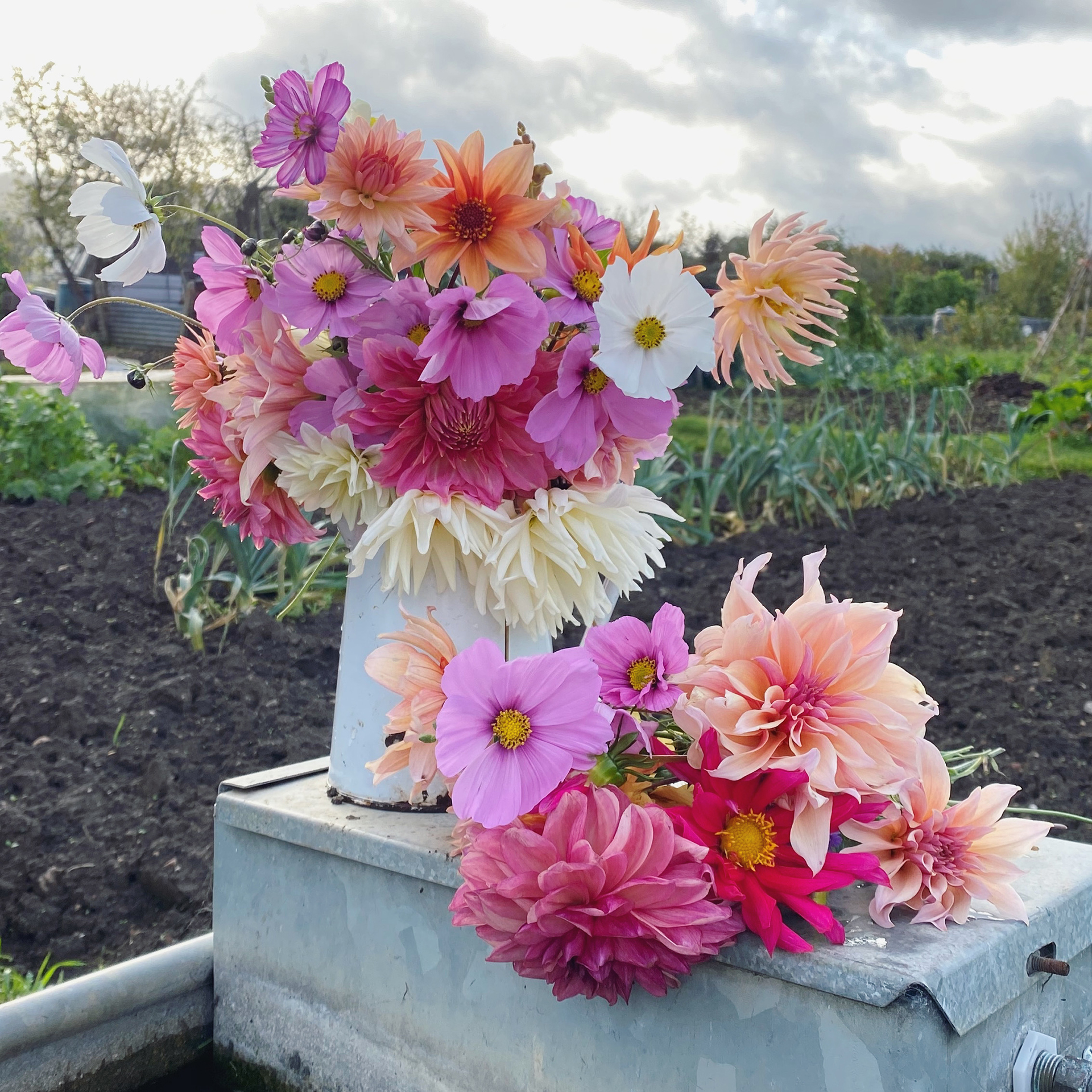
Choosing the right dahlia for your yard
A member of the asteraceae family, there are around 36 species of dahlias, with thousands of various cultivars and hybrids. Skilled breeders across the world have produced a wide range of dahlia sizes and colors practically unmatched in the world of flowers. Sizes range from the smallest lilliput to dinner plate-sized blooms and there is every color except for that most elusive color for breeders – blue.
Dahlias can be described as:
- Decorative
- Cactus
- Anemone
- Waterlily
- Pompon
- Balls
- Collarette
- Dwarf
- Peony
- Orchid
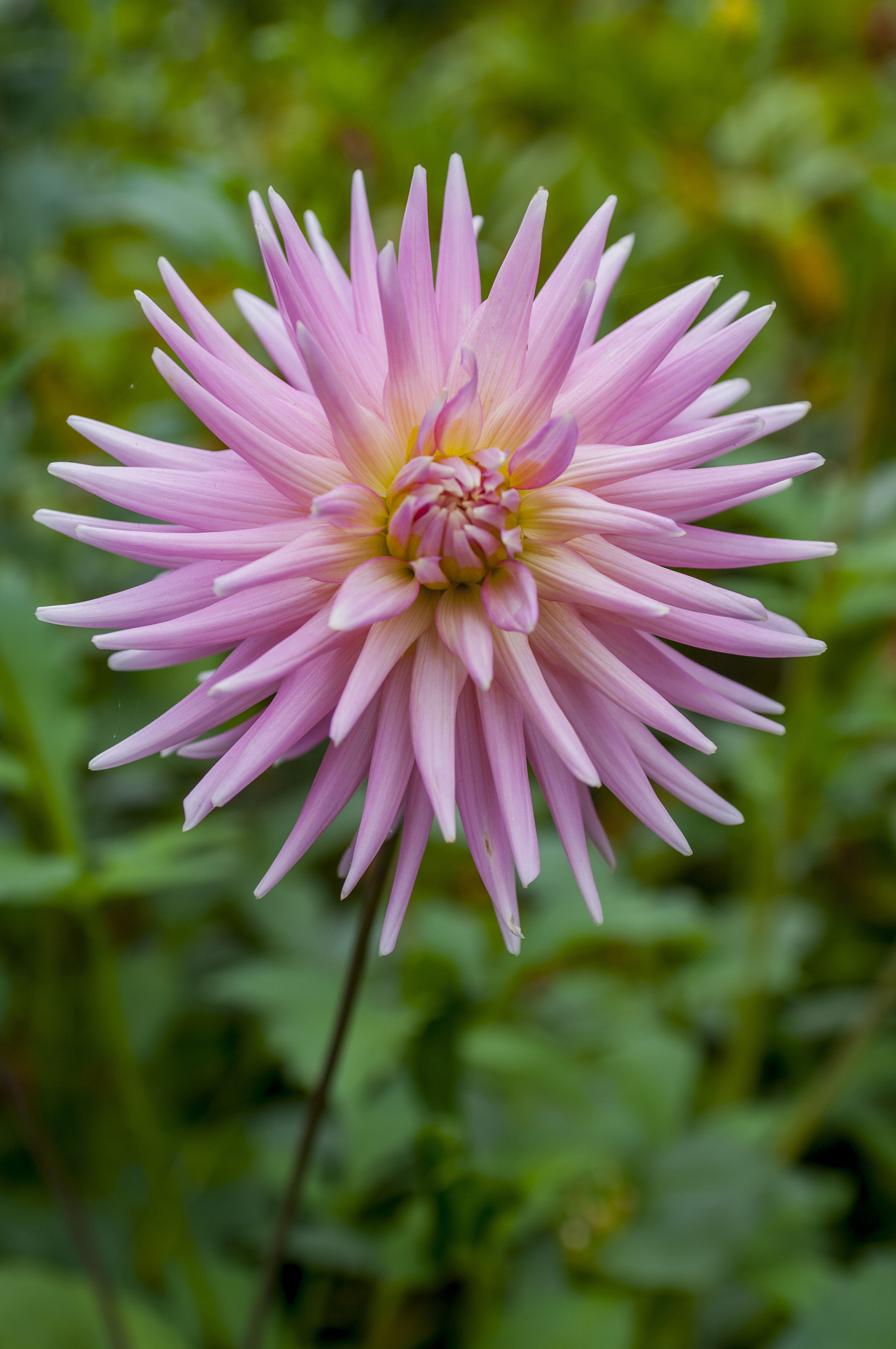
Select varieties for your weather conditions and by the shape, size and color.
Open–centred single and semi-double varieties that produce an array of simple flowers are the best choice for pollinators and flowers that attract bees as they can see where to land and feed on the nectar, and look charming mingling with asters and other daisy shaped flowers.
Decorative and cacti dahlias are brilliant varieties if you're planning a cut flower garden, as their blooms are a good size for displaying in a vase. While giant varieties such as Cafe au Lait, look show-stopping in a border, their large, dinner-plate blooms are often too large for cutting.
There are some lovely more diminutive varieties that are perfect plants for pots, such as dwarf colarettes, lilliputs and the low-growing Topmix series.
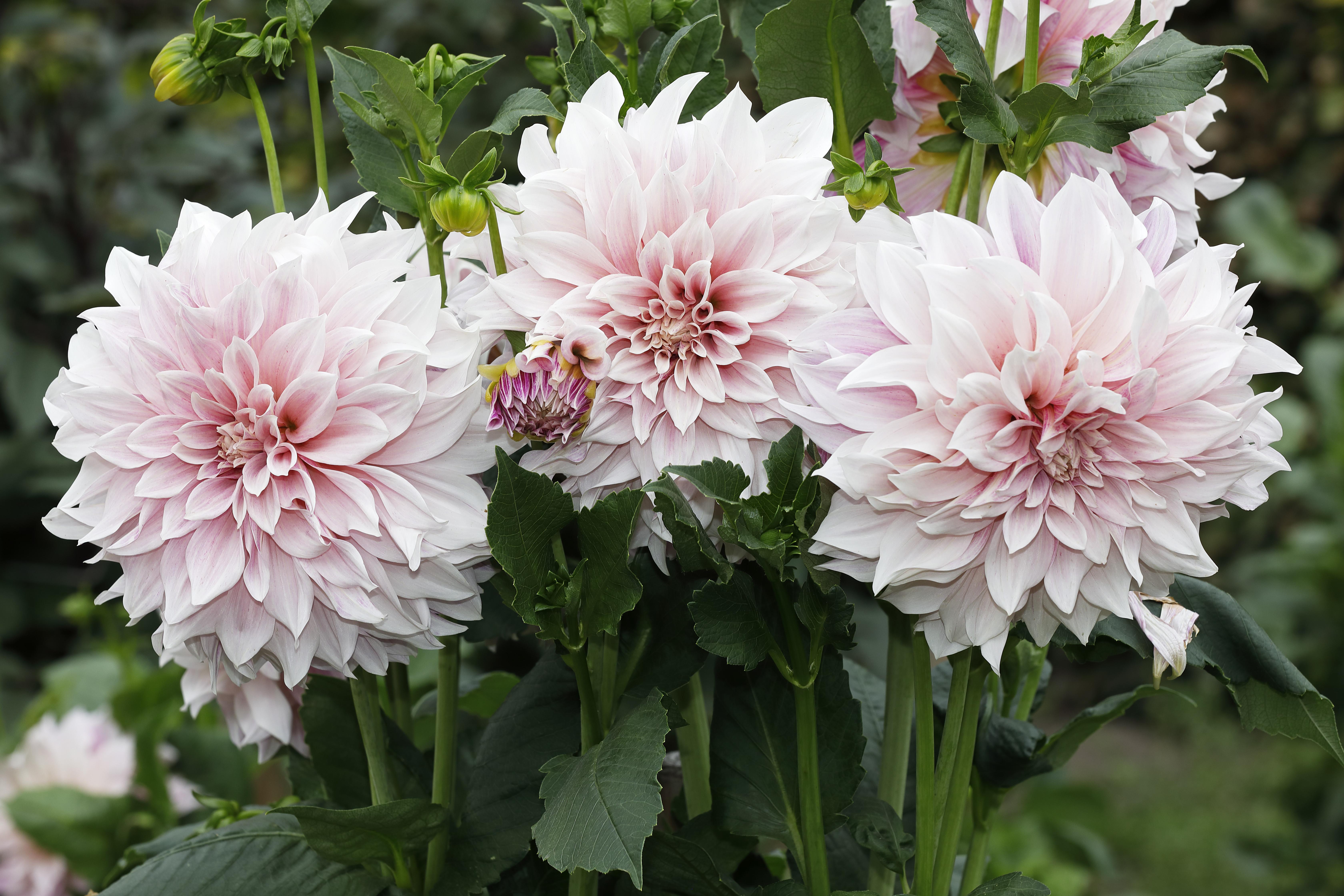
FAQs
How many flowers do you get from one dahlia tuber?
You can get up to 20 flowers from one dahlia tuber.
Decorative and cactus dahlias are the perfect cut-and-come-again blooms, and will keep flowering as long as you keep picking them, filling both garden and home with their floriferous joy. Recut the stems under water and they last in a vase for four to six days.
Will dahlias flower for longer if I feed them?
'Yes, feeding does give flowering times a boost,' says Graham Rice, garden expert for Homes & Gardens. 'Feed every two or three weeks from planting in May until September. A tomato feed is ideal. It also pays to keep the plants moist when you water plants, but not waterlogged. If the plants dry out, the stems will be shorter, the flowers will be smaller and fade more quickly, and flowering will finish earlier.'
What do you do with dahlias when they've finished flowering?
Dahlias can flower right up to December, but once the frost comes they are over. You can leave dahlia tubers in the ground over winter if they are in a sheltered position with good drainage, but if they are in an exposed site it’s probably best to lift and store the tubers to prevent frost damage.
'I recommend that you wait at least 10 to 14 days after your first hard frost before digging,' says flower farmer Erin Benzaken of Floret Flowers, as this allows the skin on the tubers time to toughen, making them less susceptible to rot.
Knock off as much of the soil as possible, leave them to dry and then wrap in newspaper or in wood shavings and store somewhere frost and damp free. They can then be replanted the following spring.
Can you leave dahlia tubers in the ground over winter?
You can overwinter dahlia tubers in the ground over winter in mild areas and in very free-draining soil.
After the dahlia flowering season is finished, leave the stems to go black from the first frost for approximately a fortnight to allow the sugars to go back down the stems to feed the tuber. Then cut the stems off just below ground level, mound up the soil or add compost and mulch with straw or bracken to protect the tubers over winter.
For truly beautiful late summer blooms that last right into fall, the main thing to remember is to deadhead dahlias. Pick for the house regularly, or snip off old flowers as they fade to prevent making seeds. The more flowers start to develop seeds, the fewer new buds will be formed.
Sign up to the Homes & Gardens newsletter
Design expertise in your inbox – from inspiring decorating ideas and beautiful celebrity homes to practical gardening advice and shopping round-ups.

Leigh Clapp is a professional photographer with over 25 years experience, primarily as a garden specialist photojournalist but also with food and travel. She delights in exploring gardens, discovering the tiny elements to their overall essence and meeting lots of enthusiastic gardeners along the way. Leigh’s work appears in magazines, newspapers and books, both in the UK and abroad, including Period Living, Country Life, and Gardens Illustrated; as well as being sole photographer for a number of books, including Garden Details, Feng Shui in the Garden, Vertical Gardens and From the Garden – fresh seasonal cooking.
-
 Barack and Michelle Obama's neutral accent chair is the perfect living room focal point – you can recreate their serene style in any-sized home
Barack and Michelle Obama's neutral accent chair is the perfect living room focal point – you can recreate their serene style in any-sized homeThis designer-approved essential fits into every modern living room – it's beautiful enough to stand alone, while pairing well with your favorite cushion
By Megan Slack Published
-
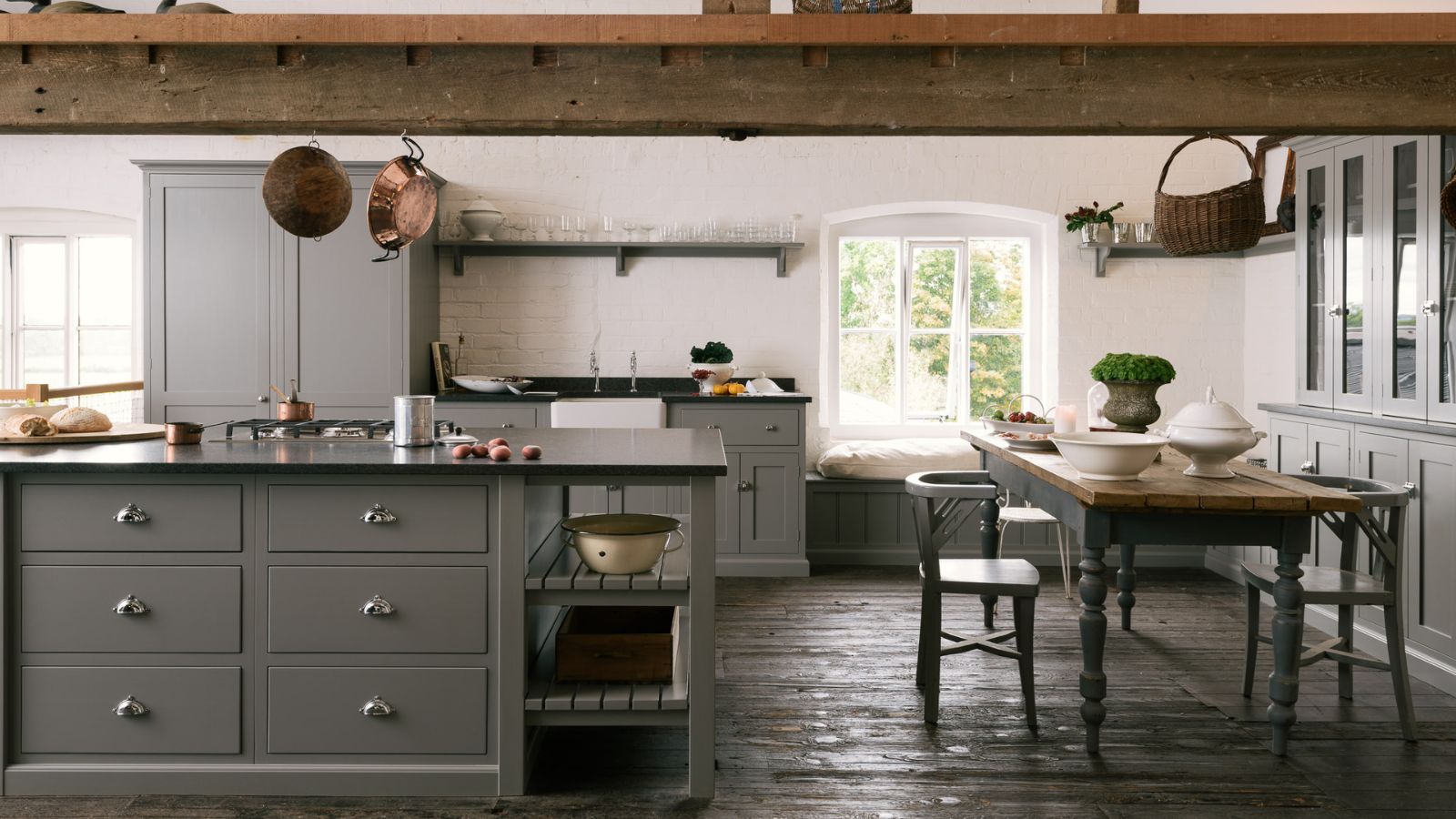 Should I choose a kitchen island or a kitchen table? This is the expert advice that helped me decide
Should I choose a kitchen island or a kitchen table? This is the expert advice that helped me decideIt's all about how you use your space
By Molly Malsom Published
